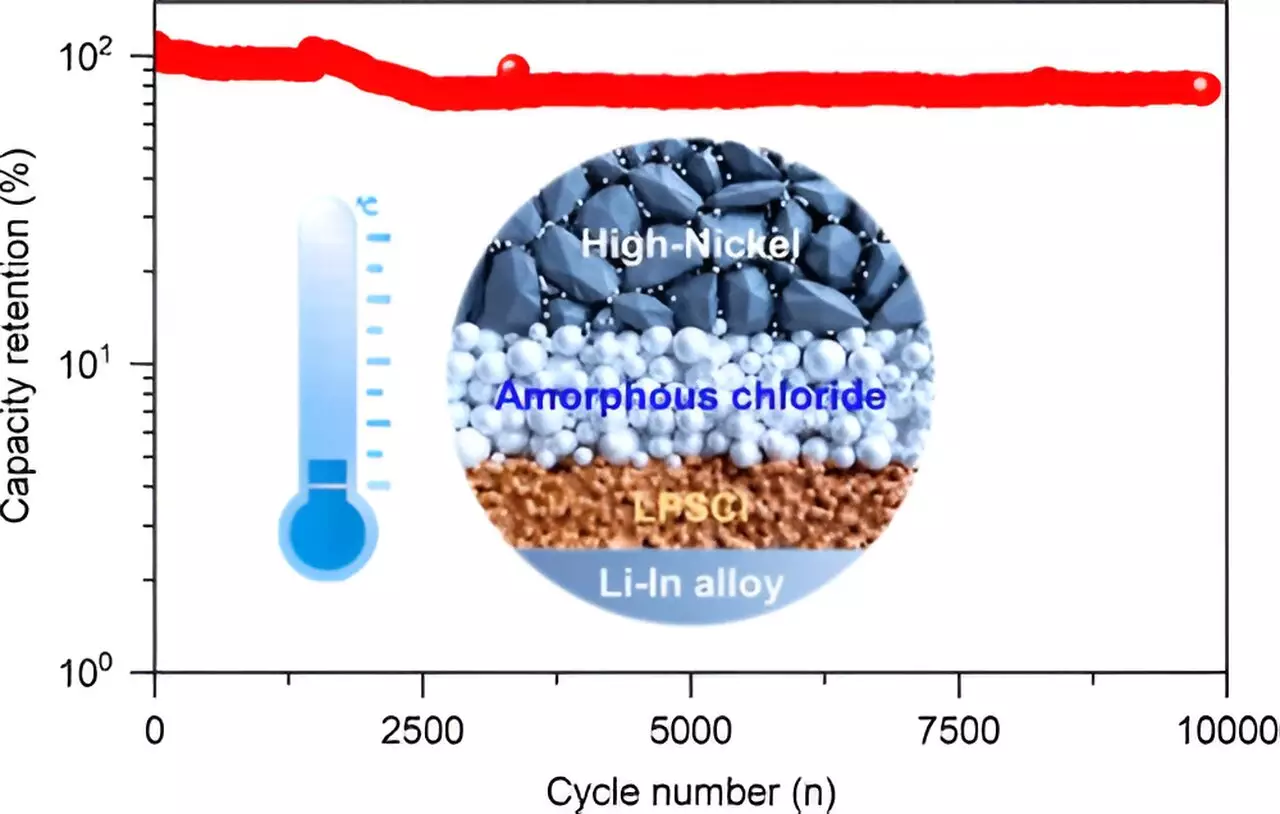In a groundbreaking study, a research team led by Prof. Yao Hongbin from the University of Science and Technology of China (USTC) has made significant strides in the development of solid electrolytes (SEs) with high Li-ion conductivity. The team successfully constructed a glassy Li-ion conduction network and created amorphous tantalum chloride SEs, presenting new possibilities for the design of all-solid-state lithium batteries (ASSLBs).
The study demonstrates that amorphous SEs possess distinctive features that set them apart from ceramic SEs. Their inherent unique glassy networks allow for close solid-solid contact and exceptional Li-ion conduction percolation. Furthermore, amorphous SEs enable fast Li-ion conduction and show promise for enhancing the utilization of high-capacity cathodes and stable cycling. These properties contribute to significantly increasing the energy density of ASSLBs.
However, challenges still exist in terms of the areal capacity of thin-film cathodes and the room-temperature ionic conductivity of amorphous Li-ion conduction phosphorous oxynitride (LiPON). Currently, commercialized Li-ion batteries surpass LiPON-based batteries in terms of energy/power density. To address this drawback, the development of amorphous SEs with high Li-ion conductivity and ideal chemical or electrochemical stability becomes crucial.
Exploring New Avenues: Amorphous Chloride SEs
Crystalline halides, particularly fluorides, chlorides, bromides, and iodides, have been identified as potential candidates for achieving high-energy-density ASSLBs due to their high voltage stability and ionic conductivity. However, the focus on developing amorphous chloride SEs has been limited. In response, the research team proposed a new class of amorphous chloride SEs with impressive Li-ion conductivity. These SEs showcase excellent compatibility with high-nickel cathodes and have been successfully incorporated into high-energy-density ASSLBs, delivering stable cycling performance across a wide temperature range.
To comprehend the structural characteristics of the amorphous matrix formed by LiTaCl6, the research team implemented various techniques. They employed random surface walking global optimization combined with a global neural network potential function to conduct a thorough energy surface search. Additionally, one-dimensional solid-state nuclear magnetic resonance lithium spectroscopy, X-ray absorption fine-structure fitting, and low-temperature transmission electron microscopy allowed for microstructural characterization of the matrix.
Building on the flexibility of component design, the researchers prepared a range of high-performance and cost-effective Li-ion composite solid electrolyte materials. These materials exhibit the highest room-temperature Li-ion conductivity, reaching up to 7 mS cm-1. This achievement aligns with the practical application requirements of high-capacity ASSLBs, illustrating the potential for widespread implementation.
Extending the Possibilities of ASSLBs
The research team verified the applicability of ASSLBs constructed with amorphous chloride SEs across a wide temperature range. Even in freezing environments as low as -10°C, these batteries achieved a high rate close to 10,000 cycles of stable operation. The remarkable component flexibility, fast ionic conductivity, and excellent chemical and electrochemical stability demonstrated by amorphous chloride SEs offer new avenues for SE design and the construction of high-performance ASSLBs.
This breakthrough not only extends the range of high-performance composite SEs but also overcomes the limitations of traditional crystalline SEs in terms of structure and component design. The findings serve as a stepping stone towards realizing high-nickel cathodes with exceptional performance for ASSLBs. Collaboration between Prof. Yao Hongbin from USTC, Prof. Shang Cheng from Fudan University, and Prof. Tao Xinyong at Zhejiang University of Technology has been instrumental in achieving this significant advancement.
The successful construction of a glassy Li-ion conduction network and the development of amorphous tantalum chloride solid electrolytes mark a crucial milestone in the field of solid-state batteries. The unique characteristics of amorphous SEs, combined with their compatibility with high-nickel cathodes, open up new possibilities for the design and implementation of high-energy-density ASSLBs. The ongoing research and advancement in amorphous chloride SEs provide optimism for the future of all-solid-state lithium batteries, paving the way for higher performance and energy density.



Leave a Reply